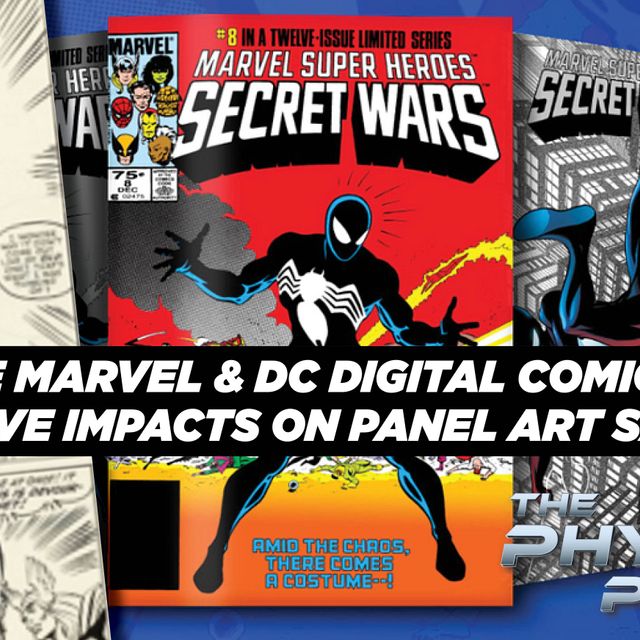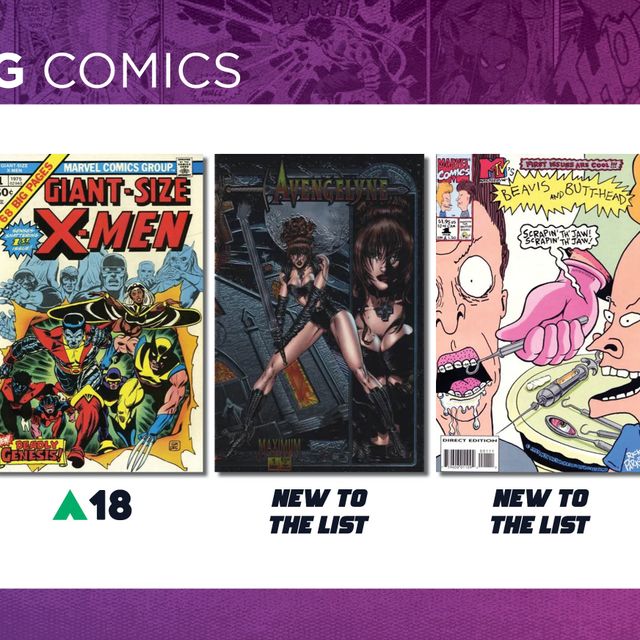Variants, signatures, and later printings... all of these types of comics have value, there's no denying that. But as a speculator, which comics have the largest appeal to the largest audience?
I don't know about you, but I'm not so keen on the gimmicks. While later printings can command big money, people don't see them as first appearances. Variants are often price inflated because of limited release runs. And sometimes comic book covers look more like notepads with all the signatures thrown on top of them.
There's money in all of those things, no doubt. I own some, but not many. You might call me old-fashioned.
Limited Appeal
As speculators, we have to understand the salability of the items we speculate in. Just think of the audience that is interested in these two issues.
Venom #3 9.8 1st printing vs. Venom #3 (3rd Printing) 9.8 Signed by Donny Cates and Ralph Stegman.
Is the third printing going to be worth more than the 1st? At the current FMV, undoubtedly. But that's not the question. Which book will have the largest audience? An unsigned first printing. The first printing regular cover unsigned book in a 9.8 will always catch more eyes than the gimmicks.
 Later Printings
Later Printings
It felt like I'd gone to battle when I wrote about Cosmic Ghost Rider last week. And yeah, sure, I made sweeping generalizations that garnered a little more emotion out of everyone than I anticipated. I admit, some later printings have value, but not to everyone as was witnessed in the nuclear fallout of that comment section. Personally, I think these are sales gimmicks, but not everyone has the same opinion. My example:
Look at Thor #5 3rd printing being preordered as the first cover appearance of Black Winter. It may or may not be, but that's what it's being marketed as on auction websites and in discussion forums. Do you think the marketing team pays attention to us bloggers? To speculation websites in general? Absolutely. They are spoon-feeding the community surefire books that are going to transform what used to be reader copies into something that creates a frenzy. That drives sales all across the board and Marvel gets to take all of us trigger-happy speculators to the bank.
But a lot of collectors and speculators just don't care about these prints. It's a limited resale market on a group of books that aren't universally accepted as anything.
 Signatures
Signatures
This over-saturation effect could also be said of signatures. I wrote a post on signatures a while back and was fortunate enough to have a commenter share that he would never buy comics with signatures. At first, I didn't understand, but now I do. If you're like me, you should be getting almost an email every week about which artist or writer CBCS or CGC has signing books. You can send in your comic, have it graded and slabbed within a month. That's great, but doesn't it seem like companies are quickly becoming signature-mills? And wouldn't that make signatures less and less rare?
To clarify, I think signatures are cool. But these signatures can often detract from who exactly wants to buy the comic. Some buyers may be totally turned off by signatures and want no part of it i.e. seeing it as a game speculators play to bump the price. Others may not be able to justify the 10-30% price increase for the signature. Either way, it's limiting your resale appeal.
 Variants
Variants
Variants offer a different side to the story but are guilty of being artificially inflated (at least that's how I see it). Are some of the variants cool? Absolutely. Some are not, however, and should be seen for what they are: not great variants. The problem is there are SO MANY of them. It's overwhelming. As speculators, we want to be able to invest our money into comic books we're confident in. But how are you going to pick between 10 variants for a strong bet? You can't. And that's the point. Variants are meant for collectors trying to complete a set, and by making more and more of them, well, it means people have to buy more and more of them.
1:25, 1:50, 1:1000000, etc.
I understand that rarity plays a part in collectibility. If you've been in the comic book game for five minutes you should know that too. But doesn't this look like inflation? A company is essentially guaranteeing the "rarity" of this variant because of its limited print run in comparison to its other variants. Does rarity mean desirability? If you've bought into the limited print ratios, then yes. (Unless it's a stunning Moebius cover that has exceptional artistic value) But there's plenty of reason to ignore that logic. Just because there isn't much of something doesn't make it desirable. It might to the right person. But it's cutting off a significant portion of your future buyers because a lot of people don't care.
And they shouldn't. Speculators have to be skeptical of whatever comes across the interwebs singing praises of whichever variant and how it'll be the "next whatever." Does it feel like "rarity inflation"? Well, it should, because that's oftentimes what it is.
The Market Always Wins
Some of you reading this will say that the market has already decided about these. That later printings, signatures, and variants are here to stay. That's true, for some of you. But there are a lot of speculators and collectors who aren't interested in these books. They're worn out by all the confusion and see them for gimmicks. That's a reality.
There is obviously money to be made in gambling on variants and whatnot, but that's what it is: gambling. You will have a substantially limited buyer base for the reasons stated above and you might be sitting on that Thanos #13 Albuquerque Variant Cover you paid $1000 for a long time. (Or maybe you picked it up for $50)
Tried and True Speculation Advice
Buy comics that are universally accepted as valuable books. (There are THOUSANDS of those). Don't get caught up in the hype and save your money for the items that you already know are worth something and appeal to a large audience. And if you do want to gamble, do so sparingly and don't bet the house on it. Because when it comes down to it, would you rather put $700 into a new variant comic a large part of the community has no interest in, or in $700 of mid-grade Silver age? Is Frank Miller going to be susceptible to the hype? Chris Claremont? Alan Moore?
I think you know the answer.



